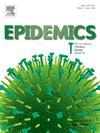Assessing the effectiveness of travel control measures in preventing imported COVID-19 cases reveals the critical role of travel volume
IF 2.4
3区 医学
Q2 INFECTIOUS DISEASES
引用次数: 0
Abstract
Background
Although travel control measures have played a key role in mitigating COVID-19 spread in certain regions, few empirical observational studies have specifically quantified their effectiveness in preventing the importation of infectious cases into communities. In Hong Kong, layered policies (e.g., mandatory quarantine, staggered testing protocols, and phased travel volume restriction) provided a natural experiment to disentangle these components. Our study evaluates the contributions of each measure to preventing imported infectious cases releasing to community.
Methods
We retrospectively assessed these measures' effectiveness in Hong Kong, utilizing data from eight countries during 2020–2021. Data on imported COVID-19 cases, including departure origins and time from arrival to report, was compiled. To estimate the SARS-CoV-2 prevalence among inbound travelers, we used a Bayesian framework that accounted for the disease history and testing sensitivity and fitted to cases detected on arrival and travel volumes. We compared the number of prevented infections under the implemented measures to a scenario where no measures were taken. We also conducted counterfactual analysis to examine the independent and marginal effects of individual measures.
Results
Stringent travel measures prevented 9821 (9065 – 10,564) importations from entering Hong Kong. Travel volume reductions had the greatest impact (93.0 % reduction, 95 % confidence interval, CI: 91.9 %-93.9 %), followed by mandatory quarantine (80.8 % reduction, 95 % CI: 75.7 % - 87.1 %). In-quarantine COVID-19 testing showed no substantial additional effectiveness in preventing infectious COVID-19 cases into community (81.8 % reduction, 95 % CI:74.8 %-87.1 %) beyond mandatory quarantine alone.
Conclusions
Our findings demonstrate that while stringent post-arrival measures effectively reduced community transmission of imported COVID-19 cases, travel volume reduction played a critical and independent role in limiting viral importation, regardless of post-arrival interventions.
评估旅行控制措施在预防新冠肺炎输入性病例中的有效性,揭示了旅行数量的关键作用
尽管旅行控制措施在缓解COVID-19在某些地区的传播方面发挥了关键作用,但很少有实证观察性研究具体量化其在防止传染性病例输入社区方面的有效性。在香港,分层政策(例如,强制隔离、交错检测协议和分阶段旅行量限制)提供了一个自然的实验来解开这些组成部分。本研究评估了各项措施对预防输入性传染病向社区传播的贡献。方法利用2020-2021年八个国家的数据,回顾性评估了这些措施在香港的有效性。汇总了输入性COVID-19病例的数据,包括出发地和从抵达到报告的时间。为了估计入境旅客中SARS-CoV-2的流行率,我们使用了一个贝叶斯框架,该框架考虑了疾病史和检测敏感性,并适用于抵达时发现的病例和旅行量。我们比较了在实施措施和未采取措施的情况下预防感染的数量。我们还进行了反事实分析,以检验个别措施的独立和边际效应。结果严格的旅行措施阻止9821例(9065 ~ 10564例)入境。减少旅行量的影响最大(减少93.0 %,95% %置信区间,CI: 91.9 %-93.9 %),其次是强制隔离(减少80.8 %,95% % CI: 75.7 % - 87.1 %)。隔离内COVID-19检测显示,除了单独强制隔离外,在预防传染性COVID-19病例进入社区方面没有实质性的额外效果(减少81.8 %,95% % CI:74.8 %-87.1 %)。结论虽然严格的入境后措施有效减少了输入性COVID-19病例的社区传播,但无论是否采取入境后干预措施,减少旅行量在限制病毒输入方面发挥了关键而独立的作用。
本文章由计算机程序翻译,如有差异,请以英文原文为准。
求助全文
约1分钟内获得全文
求助全文
来源期刊

Epidemics
INFECTIOUS DISEASES-
CiteScore
6.00
自引率
7.90%
发文量
92
审稿时长
140 days
期刊介绍:
Epidemics publishes papers on infectious disease dynamics in the broadest sense. Its scope covers both within-host dynamics of infectious agents and dynamics at the population level, particularly the interaction between the two. Areas of emphasis include: spread, transmission, persistence, implications and population dynamics of infectious diseases; population and public health as well as policy aspects of control and prevention; dynamics at the individual level; interaction with the environment, ecology and evolution of infectious diseases, as well as population genetics of infectious agents.
 求助内容:
求助内容: 应助结果提醒方式:
应助结果提醒方式:


